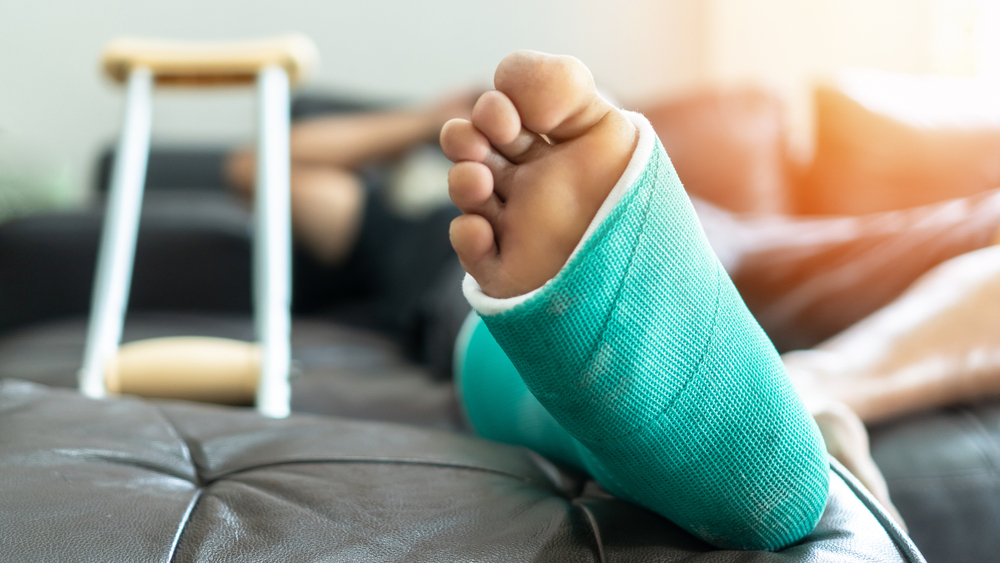
Our bones are extraordinary substances. Did you know that they’re as strong as steel but fifty times lighter in mass? However, at Central Orthopedic Group we know very well that repetitive, significant force or a sudden, violent impact directly on the bone, causes serious damage. Either scenario can decimate the bone’s integrity, which ultimately is what causes it to break. In the event of a broken bone, it’s essential that you do not postpone your treatment, and seek attention immediately.
Of course, all two-hundred and six bones in our bodies can break somehow. However, there are some bones that break much more easily. In this post, we’ll explore the most frequently broken bones in the skeletal system, the corresponding symptoms and how you can protect yourself from each injury.
1. Collarbone
First and foremost, a collarbone fracture describes a break in the long, slightly-curved bone that adjoins the shoulders to the breastbone. Also, collarbone fractures account for up to five-percent of all fractures. They occur mostly in people under twenty-five and in senior citizens over seventy. Usually, severe spills, sports injuries and car accidents are the primary catalysts for these breaks.
Delivery trauma can sometimes lead to collarbone fractures in newborns. For example, if the baby gets stuck in the birth canal, or when doctors use rigid tools to assist with the delivery.
Often, a collarbone fracture comes with swelling on or around the shoulder, bruises, stiffness or feeling unable to move the shoulder, no range of motion or a grinding or cracking feeling when you move your shoulders and tenderness.

2. Ankle
Nearly twenty-percent of sports medicine appointments consist of ankle fractures. Usually, the patient is someone with an involvement in some sort of activity (basketball, ballet, skydiving, skiing, etc.) that places enormous strain on the ankles. Often, ankle fractures occur from someone falling from a considerable height, slipping on a patch of ice or a direct blow to the ankle accidentally.
Usually, broken ankle symptoms include bruising, deformity, inability to put weight on the foot, instant, severe pain, swelling and tenderness.
3. Forearm
Forearm fractures can occur at several locations in between the hand and the elbow. Often, spots like the forearm’s center, or closer to the elbow, are the areas where the bone breaks.
Additionally, over forty-percent of childhood fractures involve the forearm, and these breaks are extremely common in children. In addition, they’re among the most common bone injuries amongst adults, as well. Usually, forearms fracture in the event of a fall, impact to the arm or car accidents.
4. Hip
When there’s a sudden break in the upper section of the thigh bone, a hip fracture happens. Elderly patients with weaker, brittle bones from osteoporosis or older age experience a significant percentage of hip fractures. About three-hundred thousand senior citizens visit emergency rooms annually with hip fractures.
Furthermore, in the event of a younger person fracturing their hip, there’s a few common causes. Usually, the fracture is borne out of intense physical activity or high-impact accidents. Sometimes, these can involve falling from a ladder or rooftop, or a car accident.
Conclusion
Ultimately, it’s helpful to know which bones are most vulnerable and to take precautions in order to protect them. Of course, we don’t want any of our patients to experience an injury of any kind, let alone bone fractures. Therefore, we recommend applying precautionary measure to any heightened activity and to consume plenty of calcium and vitamin D to strengthen your bones.
